Review Article
Volume 1 Issue 6 - 2017
Role of Receptor Tyrosine kinases in Neoplasms and other Diseases: Review of Literature
Tripoli University, Faculty of Dentistry, Departement of Oral Surgery, Oral Medicine and Oral Pathology, Libya
*Corresponding Author: Dr. Abdullatef Nureddin. Tripoli University, Faculty of Dentistry, Departement of Oral Surgery, Oral Medicine and Oral Pathology, Libya.
Received: September 30, 2017; Published: October 27, 2017
Abstract
Receptor Tyrosine Kinases (RTKs) are a high-affinity cell membrane receptors for growth factors, cytokines, and hormones. Since the discovery of the first receptor tyrosine kinase (RTK) many members of this family of cell membrane receptors have emerged as key regulators of very important cellular active biological processes, such as cellular proliferation and differentiation. In many human cancers, gene amplification and/or overexpression of RTKs occur, which might increase the response of cancer cells to normal growth factor levels. Additionally, overexpression of a specific RTKs such as type III RTK on the cell surface increases the incidence of receptor dimerization. In many cases this results in constitutive activation of the type III RTK leading to aberrant and uncontrolled cell proliferation and tumor formation. This review may provide a good information and high lights the role of RTK in human neoplasms and other diseases for researchers who work in this aspect.
Keywords: RTKs; Cellular proliferation; Differentiation; Overexpression; Neoplasms; Diseases
Introduction
Receptor Tyrosine Kinases (RTKs) are a high-affinity cell membrane receptors for growth factors, cytokines, and hormones including insulin, growth factors such as epidermal growth factor (EGF) and fibroblast growth factor (FGF), and protein molecules that regulate critical cellular processes, such as cellular proliferation, cellular differentiation, cell survival, metabolism, cellular migration and cell cycle control.These different biological processes occurred by which calledligand binding. Ligand binding stimulates the tyrosine kinase activity of the receptors, leading to recruitment of enzymes and adapter proteins that activate intracellular signaling pathways which control different normal cellular biological process [1,2].
Moreover. RTK have been shown not only to be key regulators of normal cellular processes but also to have a critical role in the development and progression of numerous diseases that result from genetic changes or abnormalities which alter the activity, abundance, cellular distribution, or regulation of RTKs [3]. Protein tyrosine kinases are enzymes that catalyze phosphoryl transfer to tyrosine residues in protein substrates, using adenosine triphosphate (ATP) as a phosphate donor. It is estimated that there are 58 receptor types RTKs and 32 non-receptor types in the human genome [4].
The most known RTKs classes or subfamilies including class I epidermal growth factor receptor family (EGFR) or (ErbB) family, class II insulin receptor family (IR), class III platelet derived growth factor (PDGFR) which include C-kit, C-FMS. C-kit is a type of receptor tyrosine kinase and a type of tumor marker, also called CD117 and stem cell factor receptor, as well as FLT3 which is a protein coding gene manifested in some malignant tumors as squamous cell carcinoma, class IV fibroblast growth factor receptor (FGFR) and class VI hepatocyte growth factor receptor (HGFR) [5].
All RTKs have a similar molecular structure, with a ligand-binding region in the extracellular domain, a single trans-membrane helix, and a cytoplasmic region that contains the protein tyrosine kinase (TK) domain plus additional carboxy (C-) terminal and juxtamembrane regulatory regions [1]. However, recently RTK have become an important target for pharmaceutical purposes such as drug therapy of malignant tumours, degenerative diseases and cardiovascular diseases. The United States Food and Drug Administration (FDA) has approved several anti-cancer drugs caused by activated RTKs which inhibit ligand binding, receptor oligomerization and help to inactivate malignant cells [3].
Advances in understanding the precise activity and structural mechanism with recent functional studies of RTK using proteomics techniques and live-cell imaging have promoted us to review and discuss the biological aspects of RTK to provide information that may be needed from literature.
Kinase activity
In biochemistry, a kinase is an enzyme that plays a key regulatory role in nearly every aspect of cell biology, it modifies other protein by chemically adding phosphate groups to them (phosphorylation) by transfer phosphate group from high-energy molecules, such as adenosine triphosphate (ATP) to specific target molecules mainly hydroxyl group of amino acids. On the contrary, an enzyme that removes phosphate groups from targets is known as a phosphatase. The phosphorylation of a target protein in most cases results in a modification that changes the enzyme activity or facilitates physical interaction with other molecules. Phosphorylation of proteins is a reversible mechanism enabling proteins to switch from an inactive state to an active state [6-8].
In biochemistry, a kinase is an enzyme that plays a key regulatory role in nearly every aspect of cell biology, it modifies other protein by chemically adding phosphate groups to them (phosphorylation) by transfer phosphate group from high-energy molecules, such as adenosine triphosphate (ATP) to specific target molecules mainly hydroxyl group of amino acids. On the contrary, an enzyme that removes phosphate groups from targets is known as a phosphatase. The phosphorylation of a target protein in most cases results in a modification that changes the enzyme activity or facilitates physical interaction with other molecules. Phosphorylation of proteins is a reversible mechanism enabling proteins to switch from an inactive state to an active state [6-8].
Structure of receptor tyrosine kinase
Most RTKs are monomers, but some exist as multimeric complexes. Each monomer has an extracellular N-terminal region, which contains primarily a ligand-binding site. A single hydrophobic transmembrane spanning domain composed of 25-38 amino acids exists between extracellular and intracellular domains. The intracellular C-terminal region comprises catalytic domains responsible for the kinase activity of these receptors, which catalyses receptor autophosphorylation and tyrosine phosphorylation of RTK sstrates [9,10].
Most RTKs are monomers, but some exist as multimeric complexes. Each monomer has an extracellular N-terminal region, which contains primarily a ligand-binding site. A single hydrophobic transmembrane spanning domain composed of 25-38 amino acids exists between extracellular and intracellular domains. The intracellular C-terminal region comprises catalytic domains responsible for the kinase activity of these receptors, which catalyses receptor autophosphorylation and tyrosine phosphorylation of RTK sstrates [9,10].
Mechanisms of Receptor Activation
Ligand binding to RTKs induces two reactions: the first one is dimerization of two monomeric receptor kinases or stabilization of a loose dimer. Secondly, trans-autophosphorylation of their cytoplasmic domains results in opening the intrinsic kinase domain for ATP binding. This in turn causes additional protein–protein interaction to occur, in addition to modulation of the activity and location of a variety of intracellular signaling molecule cascades. Thereby determining the appropriate physiological response among the final targets of these cascades in the nucleus [11-13]. Recent structural and functional studies have discussed the mechanism of RTK regulation and the concepts that underlie the activation of intracellular signaling pathways following growth factor binding to RTKs. Also, recent biological approaches were used to understand the complicated circuits and networks that result from the interplay among the multiple signaling pathways activated by RTKs [13]
Ligand binding to RTKs induces two reactions: the first one is dimerization of two monomeric receptor kinases or stabilization of a loose dimer. Secondly, trans-autophosphorylation of their cytoplasmic domains results in opening the intrinsic kinase domain for ATP binding. This in turn causes additional protein–protein interaction to occur, in addition to modulation of the activity and location of a variety of intracellular signaling molecule cascades. Thereby determining the appropriate physiological response among the final targets of these cascades in the nucleus [11-13]. Recent structural and functional studies have discussed the mechanism of RTK regulation and the concepts that underlie the activation of intracellular signaling pathways following growth factor binding to RTKs. Also, recent biological approaches were used to understand the complicated circuits and networks that result from the interplay among the multiple signaling pathways activated by RTKs [13]
Regulation of RTK activity
Bennasroune., et al. [14] pointed out that the catalytic activity of RTKs has to be normally under tight control, this is achieved by a variety of means.
Bennasroune., et al. [14] pointed out that the catalytic activity of RTKs has to be normally under tight control, this is achieved by a variety of means.
- Ligand sequestration and binding inhibition: In this case, the inhibition involves a physical interaction between both the extracellular and transmembrane domains, which leads to changes in configuration of receptor. Thus, inhibits ligand binding and autophosphorylation [15].
- Inhibition of RTK autophosphorylation: Protein tyrosine phosphatases are used to inhibit RTKs autophosphorylation. It specifically dephosphorylate certain subsets of phosphorylated tyrosines on RTKs, subsequently blocking downstream signaling [16,17].
- Inhibitory Proteins that Counteract Downstream Signaling: During the last years, several negative regulators or physiological inhibitors of RTK downstream signaling pathways have been described as Erk /MAP kinase and PI3Kinase [15].
- Receptor Down-regulation: Down-regulation of RTKs is an irreversible mechanism of inhibition that regulates the extent of the signal by removing activated receptors from the plasma membrane. Once activated, RTKs are internalized and targeted for degradation by lysosomes or locally destroyed in proteasomes [18].
Role of RTKs in human cancer and other disease
In normal cells, the activity of RTKs and their mediated cellular signaling is precisely co-ordinated and tightly controlled. Deregulation and mutations of RTK signaling system are closely linked to cancers, diabetes, inflammation, severe bone disorders, arteriosclerosis, angiogenesis and other proliferative disease as psoriasis. Moreover, certain genetic alterations are associated with distinct inherited human developmental syndromes such as dwarfism. RTKs may become potent oncogenes with transforming potential via various mechanisms: gene amplification, over expression, gene mutation and autocrine-paracrine stimulation. Moreover, they can be used as attractive targets of cancer therapy [15,19,20].
In normal cells, the activity of RTKs and their mediated cellular signaling is precisely co-ordinated and tightly controlled. Deregulation and mutations of RTK signaling system are closely linked to cancers, diabetes, inflammation, severe bone disorders, arteriosclerosis, angiogenesis and other proliferative disease as psoriasis. Moreover, certain genetic alterations are associated with distinct inherited human developmental syndromes such as dwarfism. RTKs may become potent oncogenes with transforming potential via various mechanisms: gene amplification, over expression, gene mutation and autocrine-paracrine stimulation. Moreover, they can be used as attractive targets of cancer therapy [15,19,20].
C – Kit
C-kit was soon defined as type III RTKs after its discovery in 1986 by Besmer., et al. This subfamily also includes the PDGFR, colony stimulating factor -1 (CSF-1) and fms–like tyrosine kinase (FLT.3) [21]. It was originally identified as a viral oncogene (v-kit) responsible for the transforming of the hardy–Zuckerman IV feline sarcoma virus. The c-kit receptor is 145-160 kDa cell membrane protein that is also called kit, CD117, or mast/stem cell growth factor receptor (SCFR). In human, kit gene is mapped to chromosome 4q12 [22,23].
C-kit was soon defined as type III RTKs after its discovery in 1986 by Besmer., et al. This subfamily also includes the PDGFR, colony stimulating factor -1 (CSF-1) and fms–like tyrosine kinase (FLT.3) [21]. It was originally identified as a viral oncogene (v-kit) responsible for the transforming of the hardy–Zuckerman IV feline sarcoma virus. The c-kit receptor is 145-160 kDa cell membrane protein that is also called kit, CD117, or mast/stem cell growth factor receptor (SCFR). In human, kit gene is mapped to chromosome 4q12 [22,23].
Structure of C-kit
C-kit like all members of subclass III has two intracellular tyrosine kinase domains divided by a kinase insert domain and a c-terminal domain. A single transmembrane domain is believed to have a helical confirmation, and a ligand–binding extracellular domain composed of five immunoglobulin-like domains share in the structure of c-kit. The first three immunoglobulin like domains in the extracellular portion form a binding site for its ligand, the fourth one is involved in c-kit dimerization and the function of the fifth is, as yet unknown [5,24].
C-kit like all members of subclass III has two intracellular tyrosine kinase domains divided by a kinase insert domain and a c-terminal domain. A single transmembrane domain is believed to have a helical confirmation, and a ligand–binding extracellular domain composed of five immunoglobulin-like domains share in the structure of c-kit. The first three immunoglobulin like domains in the extracellular portion form a binding site for its ligand, the fourth one is involved in c-kit dimerization and the function of the fifth is, as yet unknown [5,24].
In addition to the above described transmembrane form of c-Kit there is a soluble truncated form that is expressed in male germ cells. Since this isoform is severely truncated it lacks functional kinase activity, but still it showed great importance for spermatogenesis. Different c-Kit isoforms were described in recent studies. Although there was a debate whether these isoforms impact on signalling or not, some studies suggested that downstream signaling, independent growth and tumorigenecity depended on the c-kit isoform [8,24,25].
Stem cell factor
Stem cell factor (SCF), also known as kit ligand (kit–L), steel factor, or mast cell growth factor, is a cytokine that binds to the c-kit receptor. It is mostly produced by fibroblasts, epithelial and endothelial cells. SCF is a glycoprotein that exists normally in two forms, a transmembrane form displayed by marrow stromal cells and in a soluble form in the serum. Both forms trigger their biological activities by binding to c-kit [26].
Stem cell factor (SCF), also known as kit ligand (kit–L), steel factor, or mast cell growth factor, is a cytokine that binds to the c-kit receptor. It is mostly produced by fibroblasts, epithelial and endothelial cells. SCF is a glycoprotein that exists normally in two forms, a transmembrane form displayed by marrow stromal cells and in a soluble form in the serum. Both forms trigger their biological activities by binding to c-kit [26].
The essential role of both SCF and c-kit was demonstrated by the previous studies on experimental animals by [25], they showed that mice lacking either SCF or cell surface c-kit were non-viable and died. Furthermore, mutations that altered the production of SCF or diminished the tyrosine activity of c-kit were associated with a variety of phenotypic abnormalities including macrocytic anemia, sterility, lack of pigmentation and mast cell deficiency. SCF is widely expressed during embryogenesis and can be detected in brain, endothelium, gametes, heart, kidney and lung. SCF also expressed in melanocytes, skin, stromal cells of bone marrow, liver and thymus, and plays an important role in hematopoiesis, localization and survival of melanocytes [7,26].
Activation of C-kit
SCF forms a non-covalent dimer that binds to two c-kit monomers and promotes c-kit dimer formation. The activated receptor becomes autophosphorylated on a number of tyrosine residues, mainly located outside the kianse domain, which serves as docking sites for signal transduction molecule such as phosphotyrosine binding (PTB) [7,21,27].
SCF forms a non-covalent dimer that binds to two c-kit monomers and promotes c-kit dimer formation. The activated receptor becomes autophosphorylated on a number of tyrosine residues, mainly located outside the kianse domain, which serves as docking sites for signal transduction molecule such as phosphotyrosine binding (PTB) [7,21,27].
Signal transduction
Stimulation of c-kit activates a wide array of signaling pathways which explains the diverse functions of c-kit in different tissues. Moreover, c-kit often functions in co-operation with other growth factors and cytokines which further complicate the signaling networks. These events reach the transcription factors which are the final targets of kinase cascade in the nucleus. Finally, transcription factors can activate or inhibit the transcription of various genes involved in the control of cell differentiation, survival and proliferation [7,24].
Stimulation of c-kit activates a wide array of signaling pathways which explains the diverse functions of c-kit in different tissues. Moreover, c-kit often functions in co-operation with other growth factors and cytokines which further complicate the signaling networks. These events reach the transcription factors which are the final targets of kinase cascade in the nucleus. Finally, transcription factors can activate or inhibit the transcription of various genes involved in the control of cell differentiation, survival and proliferation [7,24].
Regulation of C-kit
The c-kit itself is regulated via several different pathways. Following activation of the c-kit, it is degraded via E3 ubiquitin–protein ligase Cb1 adapter protein which promotes degradation via the proteasome or the lysosome. In addition, c-kit kinase activity is down regulated via the cytosolic phosphatyrosyl/phosphatase shp1 (SH2 domain–containing phosphatase 1). Recent data suggests that c-kit activity is also down regulated via protein kinase c (PKC) activation where a negative feedback loop is proposed, means that c-kit activates PKC and subsequently phosphorylates c-kit on specific residues leading to negative regulation of c-kit activation [8].
The c-kit itself is regulated via several different pathways. Following activation of the c-kit, it is degraded via E3 ubiquitin–protein ligase Cb1 adapter protein which promotes degradation via the proteasome or the lysosome. In addition, c-kit kinase activity is down regulated via the cytosolic phosphatyrosyl/phosphatase shp1 (SH2 domain–containing phosphatase 1). Recent data suggests that c-kit activity is also down regulated via protein kinase c (PKC) activation where a negative feedback loop is proposed, means that c-kit activates PKC and subsequently phosphorylates c-kit on specific residues leading to negative regulation of c-kit activation [8].
Function of C-kit
As together with SCF, c-kit is a key controlling receptor for a number of cell types. It is required for normal hematopoiesis, gametogenes and melanogensis [28]
As together with SCF, c-kit is a key controlling receptor for a number of cell types. It is required for normal hematopoiesis, gametogenes and melanogensis [28]
Role of c-kit in hematopoiesis: C-kit and its ligand play an important role in the hematopoiesis during embryonic development. It is expressed in subsets of hematopoietic stem cells such as erythropoiesis and lymphopoiesis of T and B cell differentiation [22], example for that is the mast cells which arise from hematopoietic progenitors in the bone marrow, but maturation and differentiation occur mainly in the tissue where they reside. This biological activity of mast cells depend on c-kit and its ligand for their cellular proliferation, differentiation, resistance to apoptosis, mobility and chemo taxis. In addition c-kit and its ligand help adhesion to fibronectin and enhancement of serotonin and histamine release [8,29].
Role of c-kit in gametogenesis: In gametogenesis, c-kit and SCF control events in primordial germ cell proliferation, survival and migration. Postnatally, c-kit is important for the proliferation and survival of spermatogonia in testis and follicle development in the ovary [29].
Role of c-kit in melanogensis: In melanogensis, c-kit and its ligand play a crucial role in the development and maintenance of the melanocyte lineage in adult skin, they exert permanent survival, proliferation and migration functions in melanocytes. In human, loss of function or mutation of c-kit or its ligand leads to an autosomal dominant hereditary condition called piebaldism, this syndrome is characterized by abnormal pigmentation of hair and skin, deafness, and mega colon [26].
Role of C-kit in Cancer: C-kit is a driving oncogene in most human tumors while over activation of downstream signaling pathways is a consequence of unregulated c-kit, resulting in dysregulation of cell growth and cancer formation [8].
In many human cancers, gene amplification and/or overexpression of c-kit occur, which might increase the response of cancer cells to normal growth factor levels, while overexpression of a specific c-kit on the cell surface increases the incidence of receptor dimerization even in the absence of an activating ligand. In many cases this results in constitutive activation of the c-kit leading to aberrant and uncontrolled cell proliferation and tumor formation [19].
Genetic alterations in c-kit protein including deletion, point mutations, tandem duplication or combination within the juxtamembrane region and alterations of the kinase domain especially of the ATP binding motif is a widely occurring event in the progress towards cancer [7,14]. Autocrine Loop of c-Kit and SCF is an important mechanism of constitutive c-kit signaling which occurs due to the concomitant overexpression of both c-kit and its ligand that may support cancer development and progression by promoting proliferation and/or by protecting the tumor cell from death [10,27].
The possible roles of RTKs in cancer have driven the development of a new generation of drugs that block or attenuate RTK activity which represent a promising area for the development of target-selective anticancer drugs. These therapeutic strategies use selective components such as monoclonal antibodies, antibody conjugates, antisense oligonucleotides and small chemical compounds where they target either extracellular ligand binding domain, intracellular tyrosine kinase or substrate binding region [10,19,30].
Inhibitors of oncogenes are proteins expected to show anti-tumor effect, possibly with fewer side effects than those associated with conventional anticancer chemotherapy, for example Imatinib mesylate is a low molecular weight inhibitor of the c-kit kinase activity which inhibits its signaling capability. This drug is already in clinical use for treatment of some cases of adenocystic carcinoma (ACC), where dramatic reduction was observed in tumor size [31,34].
Immunohistochemical Expression of C-kit
C-kit is expressed in a variety of normal and neoplastic tissues [35,36]. Many normal cell types are immunohistochemically positive for c-kit which includes mast cells, certain hematopoietic stem cells, germ cells, melanocytes, gastrointestinal cajal cells and subsets of neurons especially in cerebellum, also many epithelial cells express c-kit such as ductal cells of breast, sweat glands and some basal cells of skin, in contrast many studies concluded that a weak c-kit protein immunostining was detected in ductal cells of the intercalated and striated ducts of normal salivary glandular tissue, while no immunoreactivity was noted in peripheral myoepithelial cells of intercalated ducts [32,33, 36-38].
C-kit is expressed in a variety of normal and neoplastic tissues [35,36]. Many normal cell types are immunohistochemically positive for c-kit which includes mast cells, certain hematopoietic stem cells, germ cells, melanocytes, gastrointestinal cajal cells and subsets of neurons especially in cerebellum, also many epithelial cells express c-kit such as ductal cells of breast, sweat glands and some basal cells of skin, in contrast many studies concluded that a weak c-kit protein immunostining was detected in ductal cells of the intercalated and striated ducts of normal salivary glandular tissue, while no immunoreactivity was noted in peripheral myoepithelial cells of intercalated ducts [32,33, 36-38].
In neoplasms, strong cytoplasmic c-kit positivity was observed in different neoplastic tissues such as sarcomatoid renal cell carcinoma, seminoma, prostate cancer and hepatocellular carcinoma, oral squamous cell carcinoma, small cell lung cancer, adenocystic carcinoma and malignant melanoma [39-44].
In salivary gland neoplasms (SGNs), c-kit was widely investigated particularly in adenocystic carcinoma(ACC) with its different histological patterns and concluded that immunehistochemical analysis of c-kit was mainly expressed in three types of tumors including ACC and its sub variants (cribriform, tubular and solid variant), Lymphoepithelioma–like carcinoma and my epithelial carcinoma [38,39, 45-47].
Furthermore, Andreadis., et al. [32] demonstrated a positive c-kit immune expression in ACC, acinic cell carcinoma, polymorph low grade adenocarcinoma (PLGA), epithelial-myoepithelial carcinoma, basal cell carcinoma, and pleomorphic adenoma, while Warthin's tumor showed strong positivity in tall columnar cell layer and in some cases focal strong staining of peripheral cells was observed.
Negri., et al. [33] examined c-kit expression in the normal salivary glands, ACC and salivary duct carcinoma (SDC). They reported it's over expression in both neoplasms more than the normal salivary tissue. C-kit over expression in SDC was consistent with the previous results of Sato., et al. [49] who reported intense c-kit immunoneactivity in the intraductal than in the invasive component.
Ahmed & Abohager [38] detected the pattern of c-kit expression in different ACC subtypes. Tubular and cribriform variants primarily showed c-kit expression in the luminal cell layer. This suggested that the myoepitheial cells did not express c-kit whereas solid variants showed expression in all cells. Bell., et al. [39] addressed the differential cellular localization of c-kit in ACC. They found that its expression was limited only to inner epithelial cells and not expressed in myoepithelial cells. They concluded that their finding underscored the importance of cellular localization of biomarkers in prognosis and therapy.
David., et al. [48] studied the difference in expression of c-kit in ACC and PLGA. The study discovered a weaker immune reactivity in PLGA compared to ACC which concluded that c-kit could be used as a tool to differentiate between ACC and PLGA.
Epivatianos., et al. [37] found that cytoplasmic and membranous c-kit expression in ACC was restricted to luminal cells of tubular structures, cells lining the pseudo cysts, and luminal cells of small ducts in cribriform structures. In the solid pattern, all cell types expressed c-kit, and the staining intensity was moderate to strong. On the contrary, c-kit expression was observed in luminal and non-luminal PLGA variants. They concluded that c-kit may offer an adjunctive aid in the differential diagnosis of ACC from PLGA.
The pattern of expression in ACC differed with the histological subtypes, as tubular and cribriform variants primarily showed c-kit expression in the luminal cell layer, on the other hand, solid variants showed expression in all cells and correlated with the worse clinical course of this variant [36].
The distinct pattern of immunohistochemical staining was noted among the tubular, cribriform, and mixed subtypes of ACC cases, particularly in the inner epithelial cells, but not in the outer myoepithelial cells. This pattern of expression was pronounced in the tubular subtype while the solid subtype of ACC exhibited diffuse immunohistochemical pattern. Studies also demonstrated that a significant differences were seen in c-kit expression for ACC versus pleomorphic adenoma (PA), basal cell adenoma, polymorph low grade adenocarcinoma (PLGA), basal cell carcinoma, Mucoepidermoid carcinoma (MEC), salivary duct carcinoma, acinic cell carcinoma, oncocytoma, Warthin's tumor and sebaceous carcinoma [48,49]
Aslan., et al. [47] reported overexpression of c-kit in ACC in local and distant recurrence of these tumors. Moreovre,. it is also observed that the prevalence of positive c-kit immunostaining was strong only in cribriform and tubular compared to solid subtype which was weak or moderate, therefore, he concluded that c-kit immunostaining is more frequently found in well differentiated tumors and might get lost during dedifferentiation of ACC.
Tang., et al. [50] demonstrated that the overexpression of c-kit in ACC was significantly associated with tumor site, TNM stage, histological pattern, perinueral invasion, local regional recurrence and distant metastasis. They concluded that the overexpression of c-kit can enhance invasion and metastasis of ACC.
Conclusion
In this Review, we discuss and high lights the activity, signal transduction, mechanism of RTK regulation and its role in human cancer and other diseases that have been scientifically confirmed from recent structural and functional studies. Moreover, it can be concluded that expression of c-kit in majority of adenocystic carcinoma of salivary glands cases and few cases in other tumors suggested that c-kit might be useful for diagnoses, differentiation, evaluation of local recurrence and distant metastasis of adenocystic carcinoma
References
- Robinson DR., et al. “The protein tyrosine kinase family of the human genome”. Oncogene 19.49 (2000): 5548–5557.
- Blume-Jensen P and Hunter T. “Oncogenic kinase signaling”. Nature 411.6835 (2001): 355-365.
- Zwick E., et al. “Receptor Tyrosine Kinase Signalling as a Target for Cancer Intervention Strategies”. Endocrine-Related Cancer 8.3 (2001): 161-173.
- Robinson DR., et al. “The protein tyrosine kinase family of the human genome”. Oncogene 19.49 (2000): 5548-5557.
- Li E and Hristova K. “Receptor tyrosine kinase transmembrane domains function, dimer structure and dimerization energetic”. Cell Adhesion & Migration 4.2 (2010): 249-254.
- Manning G., et al. “The protein kinase complement of the human genome”. Science 298.5600 (2002): 1912-1934.
- Roskoski Jr R. “Signaling by Kit protein-tyrosine kinase the stem cell factor receptor”. Biochemical and Biophysical Research Communications 337. (2005): 1-13.
- Edling CE., et al. “Hematopoietic progenitor cells utilize conventional PCK to suppress PKB/AKt activity in response to c-kit stimulation”. British Journal of Haematology 136 (2007): 260-268.
- Schlessinger J. “Cell singling by receptor review tyrosine kinases”. Cell 103.2 (2000): 211-225.
- Zwick E. et al. “Receptor tyrosine kinase signaling as a target for cancer intervention strategies”. Endocrine-Related Cancer 8. 3 (2001): 161-173.
- Zwick E., et al. “Receptor tyrosine kinases as targets for anticancer drugs”. Trends in Molecular Medicine 8.1 (2002): 17-23.
- Hubbard SR and Miller WT. “Receptor tyrosine kinases: mechanisms of activation and Signaling”. Current Opinion in Cell Biology 19.2 (2007): 117-123.
- Lemmon MA and Schlessinger J. “Cell signaling by receptor tyrosine kinases”. Cell 141.7 (2010): 1117-1134.
- Bennasroune A., et al. “Tyrosine kinase receptors as attractive targets of cancer therapy”. Critical Reviews in Oncology/Hematology 50.1(2004): 23-38.
- Ledda F and Paratcha G. “Negative regulation of receptor tyrosine kinase (RTK) signaling”. Biomarker Insights 2 (2007): 45-58.
- Ӧstman A and Bohmer FD. “Regulation of receptor tyrosine kinase signaling by protein tyrosine phosphatases”. Trends in Cell Biology 11.6 (2001): 258-266.
- Haj FG., et al. “Regulation of receptor tyrosine kinase signaling by protein tyrosine phosphatase-1B”. The Journal of Biological Chemistry 278.2 (2002): 239-244.
- Shtiegman and Kand Yarden Y. “The role of ubiquitylation in signaling by growth factors: implications to cancer”. Seminars in Cancer Biology 13.1 (2003): 29-40.
- Krause and DS and Van Etten RA. “Tyrosine Kinases as Targets for Cancer Therapy”. The New England Journal of Medicine 353.2 (2005): 172-187.
- Hubbard SR and Miller WT. “Receptor tyrosine kinases: mechanisms of activation and Signaling”. Current Opinion in Cell Biology 19.2 (2007): 117-123.
- Scholl S., et al. “Signal transduction of c-Kit receptor tyrosine kinase in CHRF myeloid leukemia cells”. Journal of Cancer Research and Clinical Oncology 130.12 (2004): 711–718.
- Liu H., et al. “Structural basis for stem cell factor–KIT signaling and activation of class III receptor tyrosine kinases”. The EMBO Journal 26.3 (2007): 891–901.
- Tetsu O., et al. “Mutations in the c-Kit gene disrupt mitogen-activated protein kinase signaling during tumor development in adenoid cystic carcinoma of the salivary glands”. Neoplasia 12.9 (2010): 708-717.
- Sattler and M and Salgia R. “Targeting c-Kit mutations: basic science to novel therapies”. Leukemia Research 28.51 (2004): 511–520.
- Dahlen DD., et al. “Soluble c-kit receptor blocks stem cell factor bioactivity in vitro”. Leukemia Research 25.5 (2001): 413-421.
- Jiang X., et al. “Structure of active core of human stem cell factor and analysis of binding to its receptor kit”. The EMBO Journal 19.13 (2000): 3192-3203.
- Lennartsson J and Ronnstrand L. “The Stem Cell Factor Receptor/c-Kit as a Drug Target in Cancer”. Current Cancer Drug Targets 6.1 (2006): 561-571.
- Rönnstrand L. “Signal transduction via the stem cell factor receptor/c-Kit”. Cellular and Molecular Life Sciences 61(19-20) (2004): 2535–2548.
- Deshpande S., et al. “Kit ligand cytoplasmic domain is essential for basolateral sorting in vivo and has roles in spermatogenesis and hematopoiesis”. Developmental Biology 337.2 (2010): 199-210.
- Gschwind A., et al. “The discovery of receptor tyrosine kinases: targets for cancer therapy”. Nature Reviews Cancer 4.5 (2004): 361-370.
- Alcedo JC., et al. “Imatinibmesylate as treatment for adenoid cystic carcinoma of salivary glands: reported of two successfully treated case”. Wiley Periodicals Inc Head & Neck 26.9 (2004): 829-831.
- Andreadis D., et al. “Detection of C-KIT (CD117) molecule in benign and malignant salivary gland tumours”. Oral Oncology 42.1 (2006): 57-65.
- NegriT., et al. “TRK-A, HER-2/neu, and KIT Expression/Activation Profiles in Salivary Gland Carcinoma”. Translational Oncology 1.3 (2008): 121-128.
- Hotte SJ., et al. “Imatinibmesylate in patients with adenoid cystic cancers of the salivary glands expressing c-Kit”. Journal of Clinical Oncology 23.3 (2005): 585–590.
- Went PT., et al. “Prevalence of kitexpression in human tumors”. Journal of Clinical Oncology 22.22 (2004): 4514-4522.
- Penner CR., et al. “C-kit expression distinguishes salivary gland adenoid cystic carcinoma from polymorphous low-grade adenocarcinoma”. Modern Pathology 15.7 (2002): 687-691.
- Epivatianos A., et al. “Application of α-smooth muscle actin and c-kit in the differential diagnosis of adenoidcystic carcinoma from polymorphous low-grade adenocarcinoma”. Oral Oncology 43.1 (2007): 67–76.
- Ahmed MM and Abo-Hager EA. “Differential expression of c-kit and CD43 in histological subtypes of adenoid cystic carcinoma of salivary gland”. The Saudi Dental Journal 22.1 (2010): 27-34.
- Bell D., et al. “Cell type-dependent biomarker expression in adenoid cystic carcinoma”. Cancer (2010): 1-8.
- Castillo M., et al. “C-kit expression in sarcomatoid renal cell carcinoma: potential therapy with imatinib”. America Urological Association 171 (6 Pt 1) (2004): 2176-2180.
- Lorenzoa GD., et al. “Expression of proto-oncogene c-kit in high risk prostate cancer”. European Journal of Surgical Oncology 30.9 (2004): 987-992.
- Chunga CY., et al. “Expression of c-kit proto-oncogene in human hepatocellular carcinoma”. Cancer Letters 217.2 (2005): 231-236.
- Ongkeko Wm., et al. “Expression of protein tyrosine kinases in head and neck squamous cell carcinomas”. American Journal of Clinical Pathology 124.1 (2005): 71-76.
- Camps C., et al. “Analysis of c-kit expression in small cell lung cancer: Prevalence and prognostic implications”. Lung Cancer 52.3 (2006): 343-347.
- Jeng YM., et al. “Expression of the c-kit protein is associated with certain subtypes of salivary gland carcinoma”. Cancer Letters 154.1 (2000): 107-111.
- Mino M., et al. “Expression of KIT (CD117) in neoplasms of the head and neck: an ancillary marker for adenoid cystic carcinoma”. Modern Pathology 16.12 (2003): 1224-1231.
- Aslan DL., et al. “C-kit expression in adenoid cystic carcinoma does not have an impact on local or distant tumor recurrence”. Wiley Periodicals Inc Head & Neck 27.12 (2005): 1028-1034.
- David B., et al. “Selective immunohistochemical comparison of polymorphous low-grade adenocarcinoma and adenoid cystic carcinoma”. Journal of Oral and Maxillofacial Surgery 64.3 (2006): 415-423.
- Sato k., et al. “Salivary duct carcinoma of parotid gland presenting kit (cd117) over expression”. Histopathology 51.1 (2007): 114-137.
- Tang Y., et al. “Expression of c-kit and Slug correlates with invasion and metastasis of salivary adenoid cystic carcinoma”. Oral Oncology 46.4 (2010): 311-316.
Citation:
Abdullatef Nureddin and Eman Agha. “Role of Receptor Tyrosine kinases in Neoplasms and other Diseases: Review of Literature”.
Oral Health and Dentistry 1.6 (2017): 265-273.
Copyright: © 2017 Abdullatef Nureddin and Eman Agha. This is an open-access article distributed under the terms of the Creative Commons Attribution License, which permits unrestricted use, distribution, and reproduction in any medium, provided the original author and source are credited.















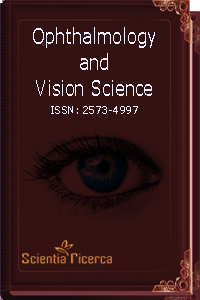
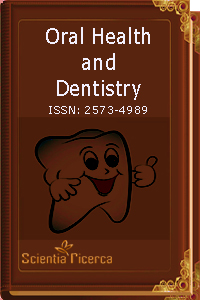
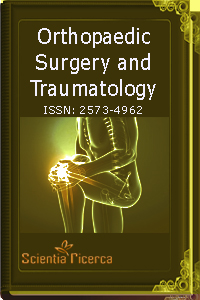
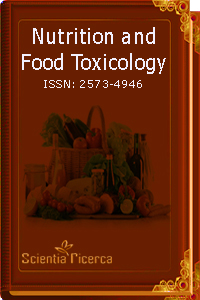
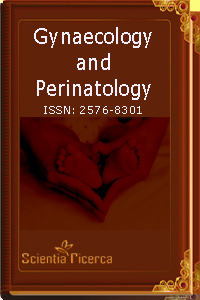
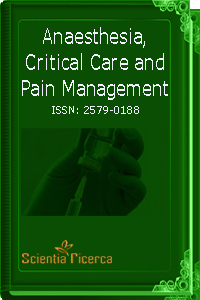
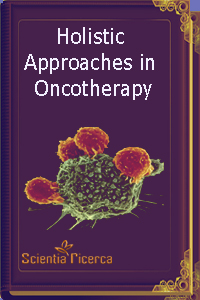
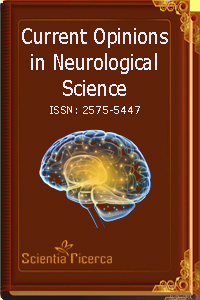
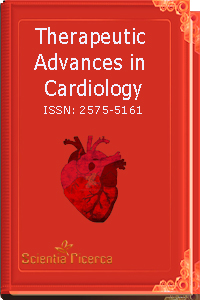
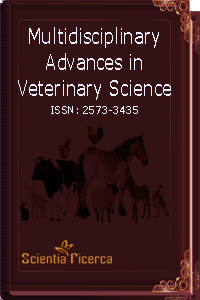
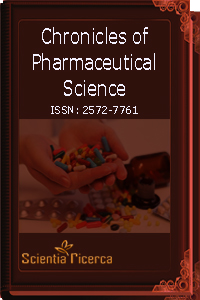
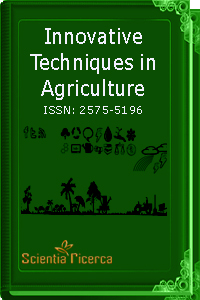
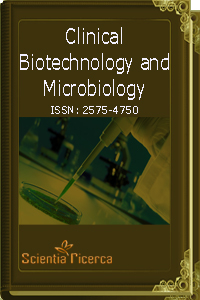
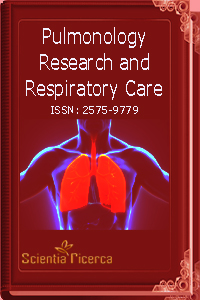
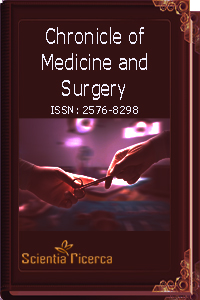


 Scientia Ricerca is licensed and content of this site is available under a Creative Commons Attribution 4.0 International License.
Scientia Ricerca is licensed and content of this site is available under a Creative Commons Attribution 4.0 International License.